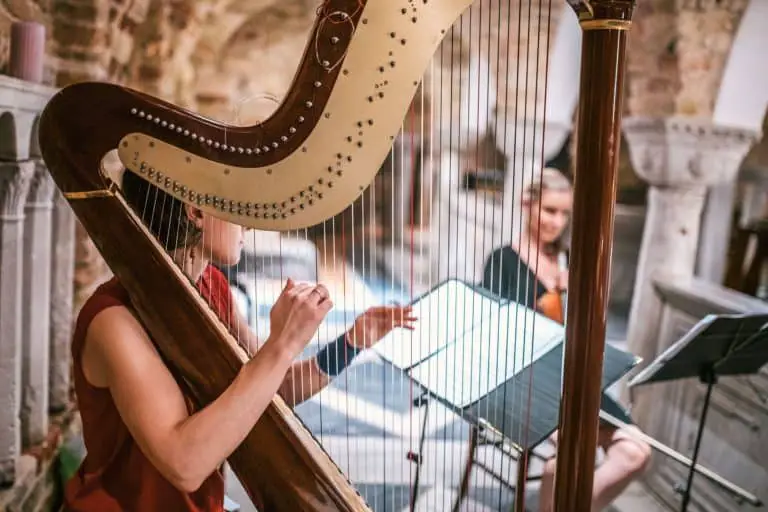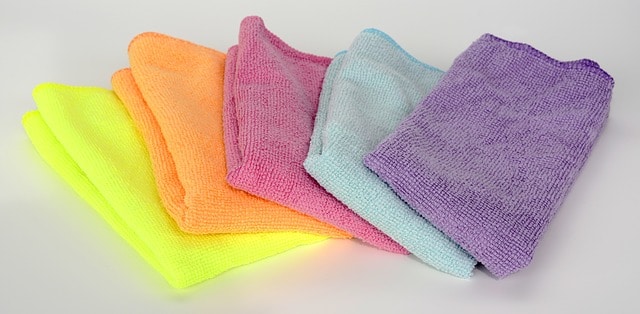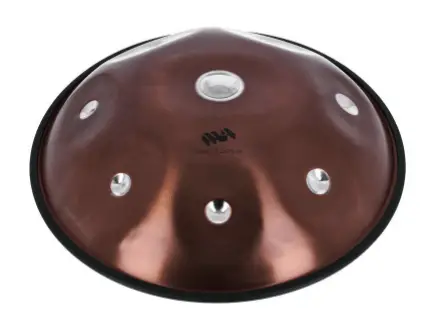Which Way Round Should I Play a Handpan? – It’s Easy!
If you have found this article having asked that question, whilst thinking it might have been a silly one, don’t worry. You are not alone, it is a very commonly asked question, the answer to which I provide below.
Is there a back or front of a handpan? – There is no back or front but commonly, the lower tones are positioned closer to the body playing outward to the front for the higher notes. Many players position their handpan to suit what they are playing even moving during play. Ultimately it is up to you.
The caveat here is that your question was on horizontal thinking and not vertical, where you might be referring to the top [notes] or bottom [Gu]. I hope not. in any case, let’s take a closer look just to confirm.
Front or Back of a Handpan – Let’s Sort This Out!
I believe this is the only answer to the question of the back or front of a handpan on the internet. Probably because there really is no answer, but given that you have arrived here, almost certainly because you have searched google for it, then I should attempt to answer it for you. I hope the resulting information leaves you satisfied. If not, there are some nice videos at the bottom which answer some similar questions.
Ultimately there is no front or back of a handpan, given the circular nature of its design. There is no left or right, top or bottom of a circle and the same can be said of a handpan instrument.
This circle is not a normal circle though. This one is blessed with beautiful tone fields, set out in a diatonic scale from left to right across the top of the handpan.
So to this end, and most commonly with players, the lowest tones and notes in the scale are usually positioned closest to the body, so that when playing outward – [toward the front if you like], it would determine that the back of the handpan is that which is closest
If you are playing a handpan not in your lap, but in a stand then the very same might be said. Positioning the lowest notes closest to you, the back, and the highest furthest away, the front, would be the most popular position.
This only applies from your perspective though right?
I mean, If I am the audience, have the back and front now switched, or am I looking at the front, which would be my back if I were playing or Vice versa?
I think the ridiculous statement above highlights that it really doesn’t matter. In reality, there is no back or front.
When the Back and Front of a Handpan Does Matter – Except it Doesn’t
Perhaps the back and front tags might be better applied if playing more than one handpan at a time.
If the handpans are pretty much together in front of the player, maybe 20-40 degrees left or right, then the front and back may be turned outward in relation to their position.
For a more obvious demonstration, if both handpans were on the direct left and right of the player at 90 degrees [I have yet to ever see anyone play like this given the difficulty in accessing the tone fields, then the back and front would again be different.
You see, I think I have made the point now that this really doesn’t matter and is of little importance.
So there you are if you need to refer to a front and back of a handpan
- Front = Higher Notes
- Back = Lower Notes
- Top = The half with the notes on
- Bottom = The half without notes and with the Gu
Except when the bottom does have notes as well – Shall we go there? No, let’s not! For more details on handpans with notes on the top AND bottom, take a look at this article on how many notes can fit on a handpan, where bottom notes are covered in depth.
Related Questions on Handpans
Here are a few more questions that often come up about handpans, particularly in terms of set up, geography and learning your way around a handpan.
Why are there notes only on the top of a handpan?
There are not. You will also find that many handpans have notes in the bottom section too. The number of notes in the bottom of a handpan is limited by the space available given the Gu takes prime position.
The video below shows how notes are utilized on the bottom of a handpan. This particular instrument is unusual in that the top is made from the most commonly used nitrided steel, whilst the bottom half has been constructed with Stainless Steel for more sustain.
It is a very nice pan, not my favorite scale personally, but a great example of a handpan with bottom notes.
Can the bottom of a handpan be played?
I can’t tell if this question is in regards to playing the bottom of a handpan when there are notes or if there are no notes and playing the GU.
So for the purpose of the answer, I am going to presume the question is based on a handpan with only upper notes, and if the bottom, with no notes, is playable.
The answer, therefore, is yes. The fact is, however, that it is more of a percussive experience than a musical one. The video below is an example of a player using the bottom half and the Gu to play the handpan, which demonstrates what I mean perfectly in terms of the percussive nature.
Interesting Handpan Facts
The handpan is not a drum. Often referred to as a hang drum, PANArt the creators of the original Hang™ instrument severed links with one of thier distributors in 2002 after they began referring to the Hang as a ‘Hang Drum’
Flipping of Handpans is frowned upon by the handpan community. The purchase of a handpan with the explicit purpose to be to resell for a higher price is very much a no-no in the handpan world. whilst some flipping is attempted and successfully completed, many flippers will have a great deal of trouble finding a buyer for this reason.
in 2019, the price of newly crafted handpan by quality makers was beginning to come with pressure from more manufacturers getting to a level of skill to create quality instruments and an influx of cheap [and nasty, might I say], Chinese imports. By the same token, the second-hand handpan market remains buoyant, strong and few become available.






